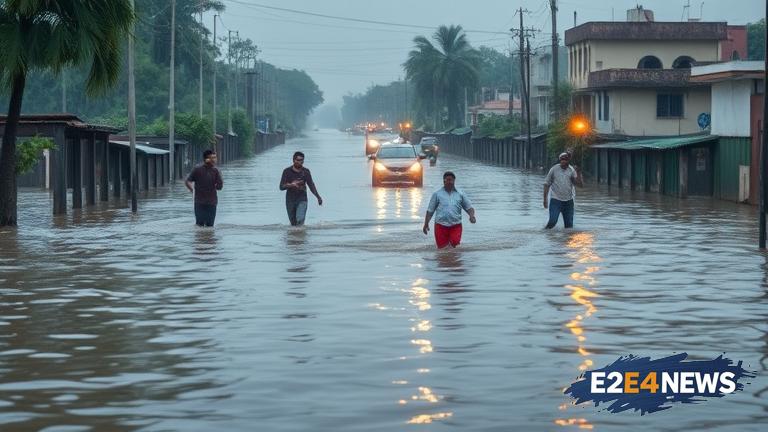The state of Uttar Pradesh in India is experiencing one of its worst flood crises in recent years. Heavy rains have hit 17 districts, causing widespread destruction and displacement of thousands of families. The floods have damaged over 350 houses, leaving many without shelter or access to basic necessities. The situation is particularly dire in the rural areas, where the floodwaters have inundated homes, farms, and infrastructure. The Indian government has deployed emergency response teams to assist in the relief efforts, including the National Disaster Response Force (NDRF) and the State Disaster Response Force (SDRF). The teams are working tirelessly to evacuate those stranded, provide food and shelter, and restore essential services. The floods have also disrupted transportation, with many roads and highways rendered impassable. The state government has announced relief packages for the affected families, including financial assistance and provision of essential items. The opposition parties have criticized the government for its handling of the crisis, alleging that the response has been slow and inadequate. The floods have also raised concerns about the state’s preparedness for natural disasters, with many questioning the effectiveness of the existing flood control measures. The Indian Meteorological Department has warned of more heavy rains in the coming days, which could exacerbate the situation. The state government has urged people to remain vigilant and follow the instructions of the authorities. The floods have also affected the local economy, with many businesses and industries forced to shut down. The agricultural sector has been particularly hard hit, with crops damaged and livestock affected. The state government has announced plans to provide compensation to the affected farmers. The floods have also highlighted the need for better infrastructure and planning to mitigate the effects of natural disasters. The Indian government has announced plans to invest in flood control measures, including the construction of new dams and embankments. The opposition parties have demanded that the government take immediate action to address the crisis and provide relief to the affected families. The floods have also raised concerns about the impact on the environment, with many worrying about the potential for waterborne diseases and the effects on local wildlife. The state government has announced plans to conduct a thorough assessment of the damage and develop a long-term plan to prevent such disasters in the future. The Indian government has also sought the help of international organizations and NGOs to assist in the relief efforts. The situation remains grim, with thousands of families still displaced and without access to basic necessities. The government has urged people to donate generously to the relief efforts and to come forward to volunteer their services.
